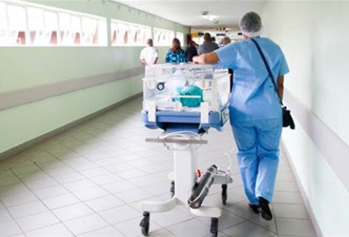Dell has escalated its attack on the Australasian services market, applying its successful direct business model to one of the last profit bastions of the channel and doubtless treading on service provider toes across both countries.
Steve Norman, business development and enterprise director for Dell Australia and New Zealand, said Dell Professional Services was applying “the Dell effect” that had been so successful in hardware to services. Already, services were the fastest growing part of Dell's business, ramping up 70 percent year on year.
“We will be taking the benefit of Dell's direct business model, such as a very efficient supply chain and very good relationship with our customers to give superior services,” he said. “We have got PCs and our share is growing, servers and storage and our shares are growing and we see a huge opportunity in services.”
He said its hardware business was still performing strongly but the global services market was worth around $800 billion a year and Dell was determined to get its share.
Gartner research suggested the hardware vendor could eventually take as much as 45 percent of the total services market. “And we are actually addressing that,” Norman said.
Dell had been in services for a long time, but was relatively unknown in the sector and so far only had about two percent of the total market. Customer service was its big thing, and Dell had already proven it could deliver consistently, to all sizes and types of businesses, across the whole nation, he maintained.
“The emphasis is on staying 'close to the box'. We're not going into high level business consulting,” Norman said. “The Dell model is modular, easy to purchase and, with a single point of accountability [that is Dell], commoditising the task as much as possible, and standardisation.”
Chris Askew, vice-president of services for Dell Asia-Pacific, said the offerings would focus around IT infrastructure, applications and training, mainly for medium-sized to large corporations and government bodies. The vendor would address heterogeneous environments – using assistance from established partners including Red Hat, EMC, Oracle and Intel -- as well as Dell-only shops.
“But if they don't want our gear, I think we'd be trying to go back in there and understand why,” he said.
Askew said Dell would aim to “remove variance” from services. Although some types of services had to be customised individually, often even those could be broken down into modular, commoditised tasks that could be delivered in menu fashion, he suggested.
“This will drive economies of scale into the customer's business model. Think supply chain for services,” Askew said. “And there is no one between Dell and the customer.”
Customers wouldn't need to work with several different service providers on an implementation, but would just go directly to Dell. When things went wrong, customers would immediately know who to blame and who to contact to fix a problem, he pointed out.
Askew said Dell's model was already proving successful in services, but he could not say how many customers Dell already had for its services, nor how many more might be in the pipeline.
However, deals Dell had already done showed that life cycle management costs could be reduced by 63 percent, break/fix costs by 58 percent and SAN implementations by 45 percent, he said.
One key to better prices was Dell's “maniacal focus on automation”, Askew added, and commitment to hiring the best people for the task.
Dell trotted out two services customers to support its claims.
Tony Pine, IT transit manager for transport services provider Connex, said Dell had deployed 420 machines, built a back office server environment and implemented Active Directory for the company, merging two company infrastructures into one in ten weeks.
That merger also involved a financial system upgrade, relocation and migration, merging and migration of two payroll systems, new hardware, software, LAN and WAN, he said.
Connex had been impressed by the level of flexibility and ownership of the deployment Dell had demonstrated, he said.
“I guess it comes down to the culture of the organisation, and we haven't been used to that. It was a breath of fresh air, and I've been dealing with service providers in the IT industry for a number of years,” Pine said. “Dell took up the challenge and Dell delivered.”
Ross Forgione, IT and communications manager at radio broadcaster Austereo, said it had employed Dell to deliver an Australia-wide infrastructure upgrade involving 700 client workstations and servers in seven locations. The changes had to be done in 18 days with a maximum downtime for each user of 30 minutes.
“Having that single point of contact made it much quicker to do the rollouts without hampering any of our users for more than 30 minutes. For 90 percent of our users, that's critical, because about half our staff are involved in on-air delivery.”
Normally such a project might have been expected to take around three months, he said.
He was also impressed with the level of respect Dell's staff offered Austereo's people. Dell had recognised that they had something to offer and incorporated their input. “There was mutual respect. I didn't expect that,” Forgione said.









.jpg&w=100&c=1&s=0)
_(8).jpg&w=100&c=1&s=0)







.jpg&q=95&h=298&w=480&c=1&s=1)


.jpg&q=95&h=298&w=480&c=1&s=1)


